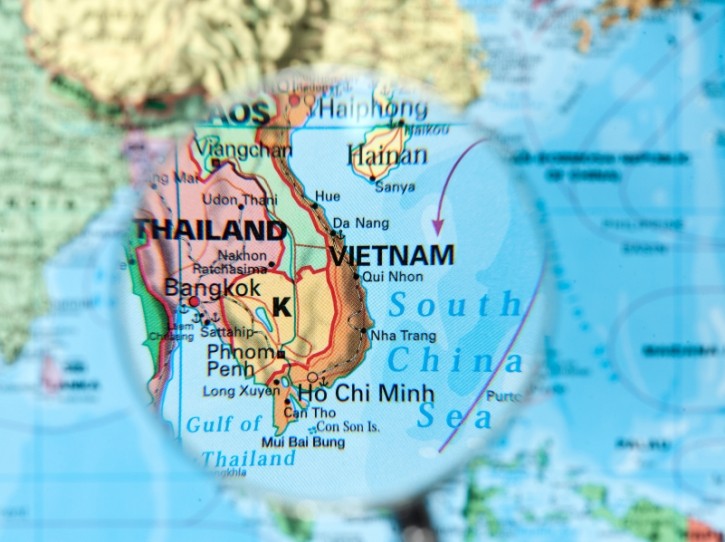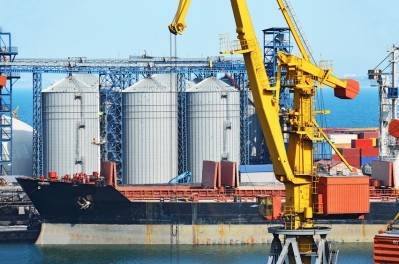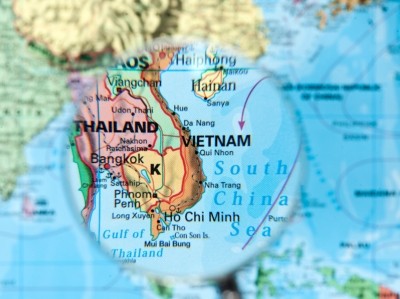Special Edition: Asia Pacific Feed Developments
Vietnam: Debate over influence of international feed players on pricing

A representative of Vietnam’s Ministry of Agriculture and Rural Development’s (MARD) told Vietnam Investment Review (VIR) international feed producers are undertaking large-scale projects in the country this year due to expansion in local livestock production.
Like in China and other South East Asian markets, population growth, changing dietary habits and rising income have resulted in a dramatic rise for meat consumption in Vietnam.
Meat consumption should grow by 2.9% annually until 2022, according to official Vietnamese data.
Furthermore, the country will need more than 20m tons of industrial feed by next year, reported BDG Vietnam.
Feed prices
However, domestic feed makers are said to be concerned about the trends they see in pricing, citing the influx of foreign feed companies as the reason behind the hike.
VIR reported that local feed firms attending a recent shrimp development conference in the Mekong Delta asked government officials to bring in stricter controls on international players in the Vietnamese market, on the basis that feed prices now in the country are at top-tier international levels due to “these foreign firms’ monopoly” on the sector.
Le Ba Lich, chair of the Vietnam Animal Feed Association, countered that stance.
“No enterprise in Vietnam is either holding a dominant position or a monopoly over the local animal feed market,” said Lich. “For example, though Thai-backed CP Vietnam Livestock Corporation is Vietnam’s biggest foreign animal feed producer, it occupies only 15-17% of the local market share.”
He said that competition between foreign animal feed makers is strong. Moreover, he said, they also have to report their product prices on a monthly basis to the ministry of finance’s price management entity, and this, therefore, acts as a break on hikes: “They can’t raise their prices without cause,” said Lich.
Jorge Becerra, MD of Cargill’s feed and nutrition business in Vietnam, told FeedNavigator: "As a guiding principle of Cargill, we operate within the laws of Vietnam and work within industry guidelines."
The US group, he continued, has 2,000 employees based in Vietnam who engage with the livestock production sector with the goal of "delivering feed products to help them succeed."
Competition laws
A representative for MARD said no feed maker in Vietnam has a market share of 30%, the baseline under Vietnam’s competition legislation to determine if a company is considered to hold the dominant position in a sector.
Under the Vietnamese regulation, a group of businesses is considered to hold a dominant market position if they take concerted action to restrict competition, or are one of:
- Two companies with total market share of 50% or higher in the relevant market
- Three companies with total market share of 65% or more in the relevant market
- Four companies with total market share of 75% or more on the relevant market.
A publication by StoxPlos, released in August 2016, concluded foreign and JV companies accounted for only 30% of the total number of feed manufacturers in Vietnam but up to 60% of overall market share. However, it noted a changing dynamic in 2015 in terms of the rise of local feed producers, with domestic firms like Masan, Hung Vuong Corporation and Hoa Phat Group strengthening their presence in the sector.
The report concluded that feed prices in Vietnam were 20% higher than in other countries in Southeast Asia due to the high cost of inputs. Around 55% of the raw materials needed for feed production in Vietnam are imported from countries such as Argentina, US, Brazil, China, and Australia, it added.
However, StoxPlus saw that due to growing competition in the market and the decreasing price trend in imported raw materials, feed prices in 2015 were actually lower than two years earlier.
Expansion projects
Vietnam, though, continues to be a fertile market for international feed players.
Last week saw a subsidiary company of CJ Group, CJ Vina Agri, hold a ground-breaking ceremony for its US$19.4m feed plant build in the Binh Dinh province of Vietnam.
It will be the sixth animal feed plant in Vietnam for the CJ Group when the facility goes live in January next year.
De Heus sees huge potential for the aquaculture sector in Vietnam and is due to open an aqua feed R&D center there, in collaboration with consultancy group, Fresh Studio, in the coming months.
That Dutch group opened its seventh feed plant in Vietnam in April 2016 - the facility supplies pig, poultry and cattle production and has annual capacity of 250,000 tons per year. It is located 20km from its existing aqua feed plant in Vinh Long province.
Cargill is also in the process of completing a feed mill build in Binh Duong - that site is due to come on stream later this year, and will have annual capacity of 260,000 (MT).
The US group opened an $8.5m facility in the Nghe An province of Vietnam in May last year.
The first quarter of 2016 also saw the completion of a new production line at a Cargill facility in Dong Thap aimed at increased production of specialty aqua feed, said the agri-giant.
Meanwhile, July 2016 saw Bunge Limited and Wilmar International Limited team up in a joint venture to develop the supply chain of soybean products in Vietnam.
The deal links crushing facilities with oil refining and generates products for consumer businesses and feed milling, a Wilmar spokesperson told us. “It will connect upstream crushing capabilities to downstream oil refining and consumer products businesses as well as to feed milling, creating integrated operations that will be both a source and sales outlet for oil in Vietnam and that will enable increased participation in the domestic feed milling industry,” the spokesperson added.
The Vietnamese meal market is already the second largest meal market in Asia following China, and is expected to grow at the fastest rate in the region, driven by fundamental demographics and the overall development of its economy. “The USDA forecasts Vietnam meal consumption should rise 43% and oil 47% by 2025," said Susan Burns, a spokesperson for Bunge.














